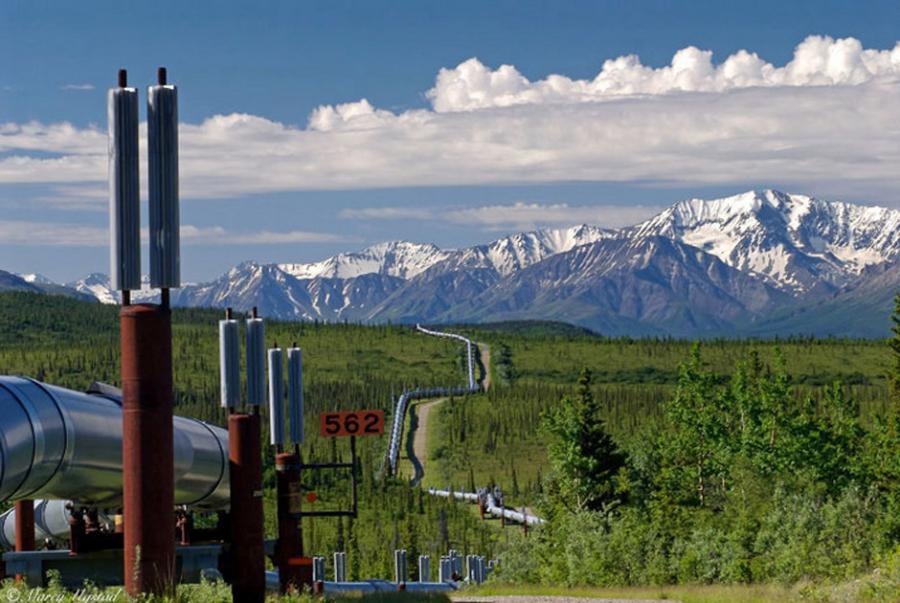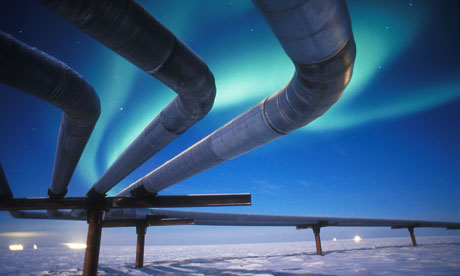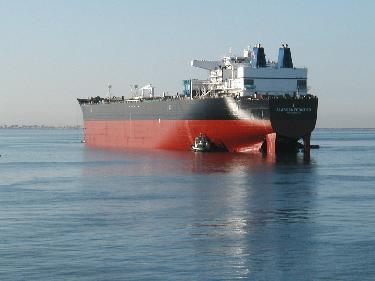Petroleum Transportation
Trans
Alaska
Pipeline
System
(TAPS)

The frozen waters of the Arctic Ocean made it impossible to transport the crude from the Alaska North Slope with oil tankers, therefore a plan to build one of the world’s longest pipelines was proposed to bring the oil to market. The construction of the 48 inch diameter, 800 mile long pipeline began in 1974 and was completed shortly three years later. The proposed cost of the pipeline was $900 million but the final cost of the Trans Alaska Pipeline was 8 billion dollars. However, after years of production the Trans Alaska Pipeline has paid for itself over and over again. The pipeline crosses over 800 rivers and steams, hundreds of miles of permafrost, earthquake prone zones, and 3 major mountain ranges. Most pipelines are built underground, but over half the Trans Alaska Pipeline is erected above ground because of permafrost and soil conditions: the effects of the pipeline heat could potentially melt the ground and cause the pipeline buckle and break. When the pipeline is above ground it is supported by crossbeams every 800 to 1,800 feet; in between the anchors, the pipe can sway on crossbeams due to thermal expansion and contraction (Cohen 33). In other places above ground, the pipeline is built in trapezoidal zigzag patterns with shorter distances between crossbeams, “at points where potential earthquake movement might be larger, bumpers have been installed on supports to limit horizontal movement of the pipe and absorb the energy of its impact” (Cohen 33). Incredibly engineered at the Denali fault, the design permits as much as 20 feet of horizontal and five feet of vertical motion and is built to withstand magnitude 8 earthquakes (Cohen 33). On November 3, 2002 the design was put to the test by a 7.9 earthquake whose epicenter was only 55 miles west of the pipeline (Hall). Amazingly, the well engineered pipeline withstood the giant earthquake felt all across the state, and only the legs of the crossbeams were damaged during the event.



